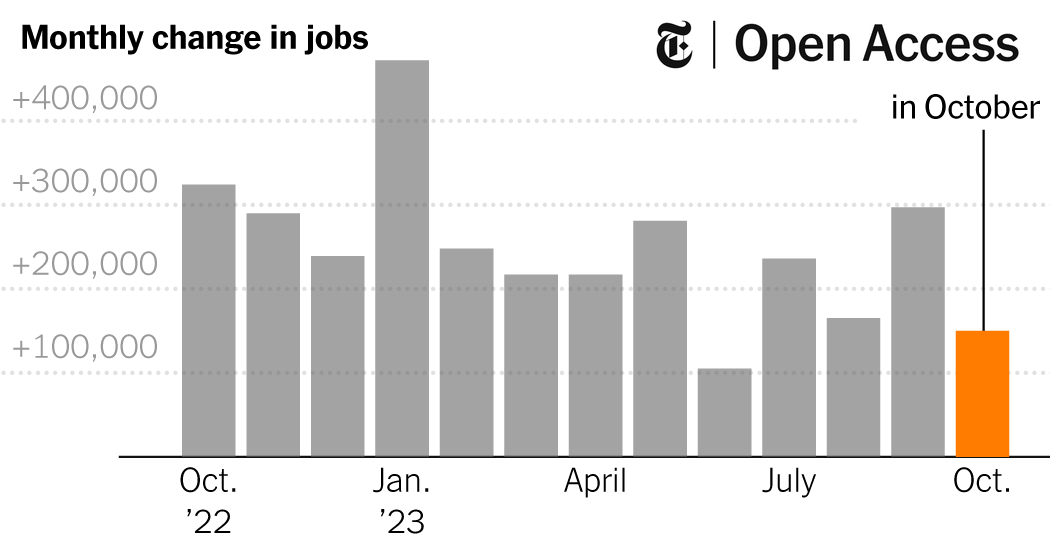[ad_1]
The increase was slightly below what economists had forecast, but not too different from the sort of monthly jobs growth the U.S. economy was experiencing prepandemic.
The unemployment rate, based on a survey of households, ticked up to 3.9 percent from 3.8 percent in September. It has been below 4 percent for nearly two years, a stretch not achieved since the late 1960s.
Figures for August and September were revised downward by a total of more than 100,000 from earlier reports. The surprisingly strong September gain, initially reported as 336,000, was restated as 297,000 and will be revised again next month.
“This is mildly concerning but for now, these are still strong numbers,” said Sonu Varghese, chief market strategist at Carson Group, an asset management firm. “I think this is still just normalization.”
Average hourly earnings were up 0.2 percent from the previous month, slightly less than expected, and were 4.1 percent higher than a year earlier, slightly exceeding forecasts.
The October numbers may have been held down because the survey was taken during major work stoppages — notably the strikes by the United Automobile Workers and related layoffs. Since then, the U.A.W. has reached tentative contract agreements with the three major U.S. automakers and told striking members to return to their jobs.
Some 96,000 people reported being out of work because of a strike or labor dispute in October, the most since 1997.
Claudia Sahm, an economist at the Federal Reserve from 2007 to 2019, and the architect of a trusted recession indicator, said the report did not suggest “a good direction” for the labor market. But she added that unemployment would have to tick higher over a longer horizon for it to be clear that recession risks were heightened.
Throughout the year the economy has defied forecasts of a downturn, even as inflation lingered, driving down consumer sentiment and, to some extent, business confidence.
The economy has also experienced tremendous bifurcation in the last couple of years, with median household net worth surging while the poverty rate has ticked back up from its lows in 2021. That’s partly because the bottom one-third of households have exhausted savings accumulated during the pandemic and increased borrowing to stay afloat.
A mammoth increase in interest rates put in place by the Federal Reserve since early 2022 is looming over vulnerable borrowers and businesses as winter approaches.
Still, many market analysts are telling clients Friday that unless a major shock occurs — or household savings drain faster than expected — the economy could keep chugging along, albeit at a more sluggish rate.
After nearly two years of lagging behind inflation, recent wage gains have on average been surpassing the pace of price increases, and workers are still in demand. Layoffs, for now, are well below historical averages. And measures of labor force productivity have made impressive gains as well in recent months.
“A rock-solid American jobs market rolls on albeit at a moderating pace,” said Joe Brusuelas, chief economist for the accounting firm RSM, pushing back against a protruding sense of gloom. “Income gains continue to outpace inflation, which bodes well for consumption heading into the traditional holiday spending season.”
On a more technical level, Mr. Brusuelas added, the report “reaffirms the direction of monetary policy” from the Fed, which has been cautious recently in raising rates further. Financial markets rallied on the news.
Last fall, a vast majority of economists in mainstream surveys had a high level of confidence that recession was ahead. This fall, forecasts for the coming year are more mixed.
In a CNBC survey of economists, Wall Street strategists and market analysts, 49 percent said that they still expected a recession in the next 12 months, while 42 percent predicted a “soft landing,” in which inflation continues to cool without a broad contraction.
[ad_2]
